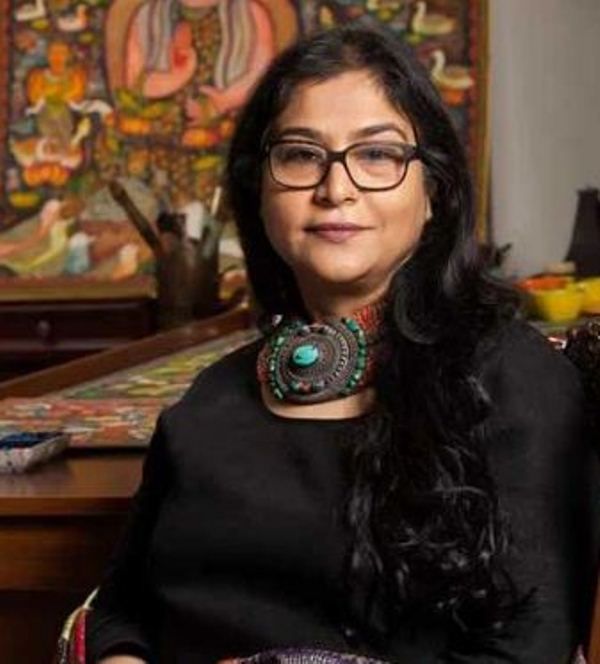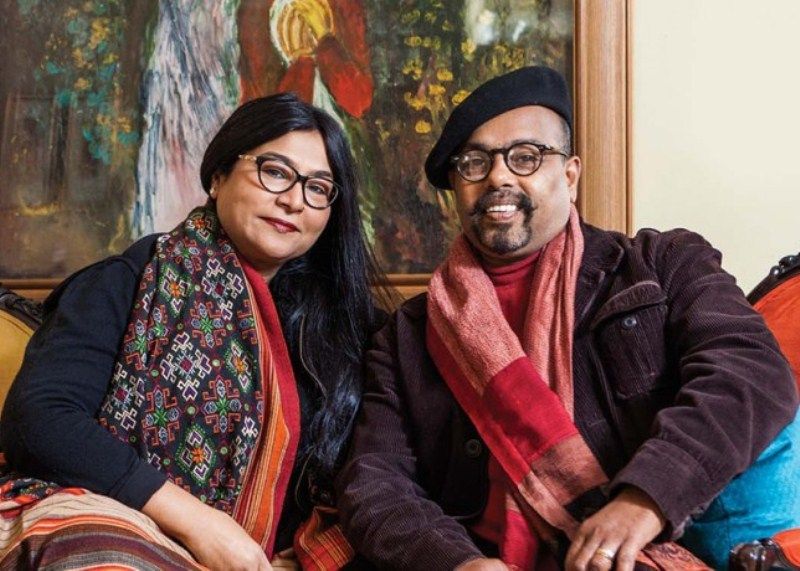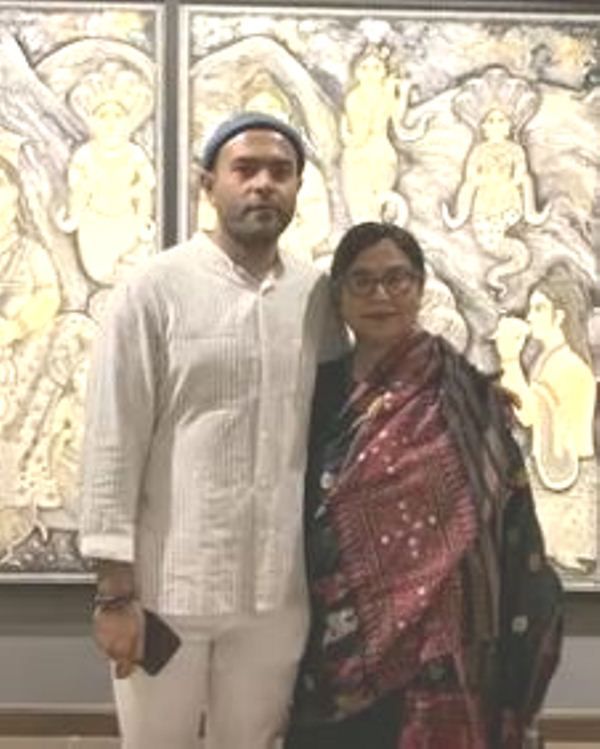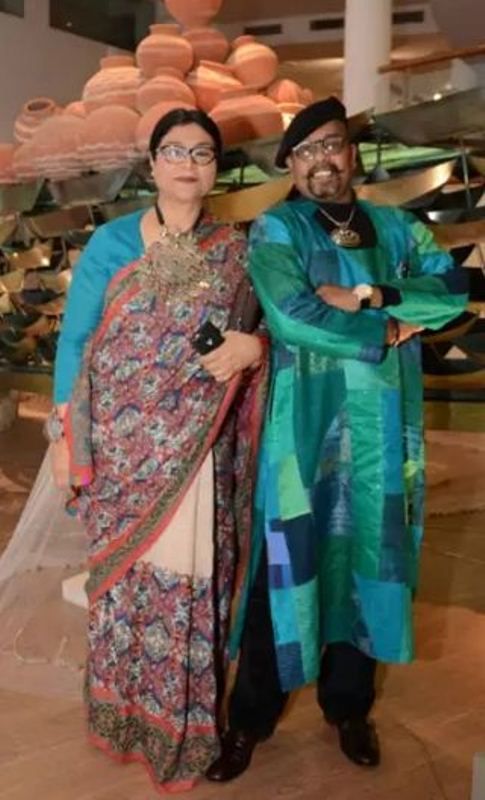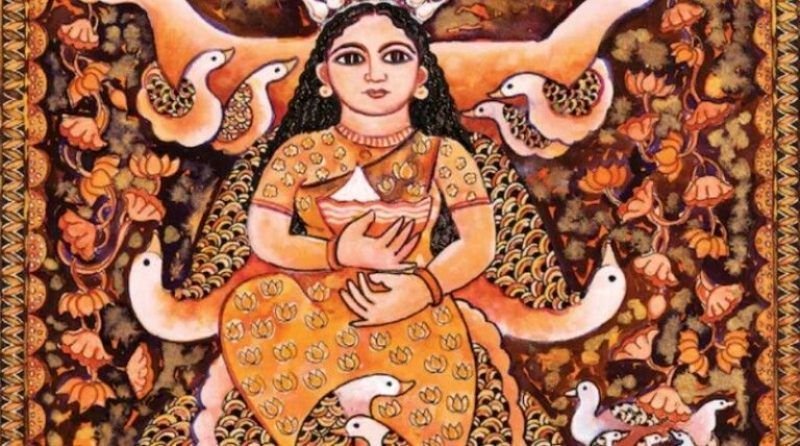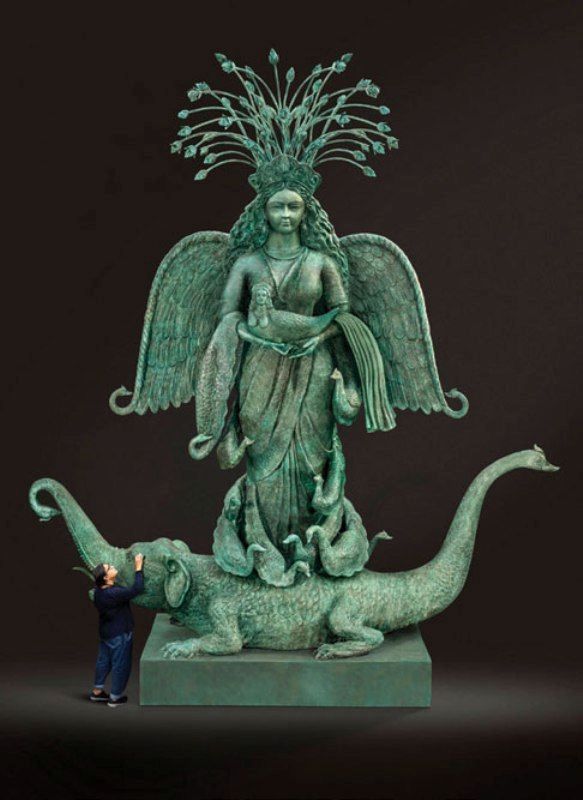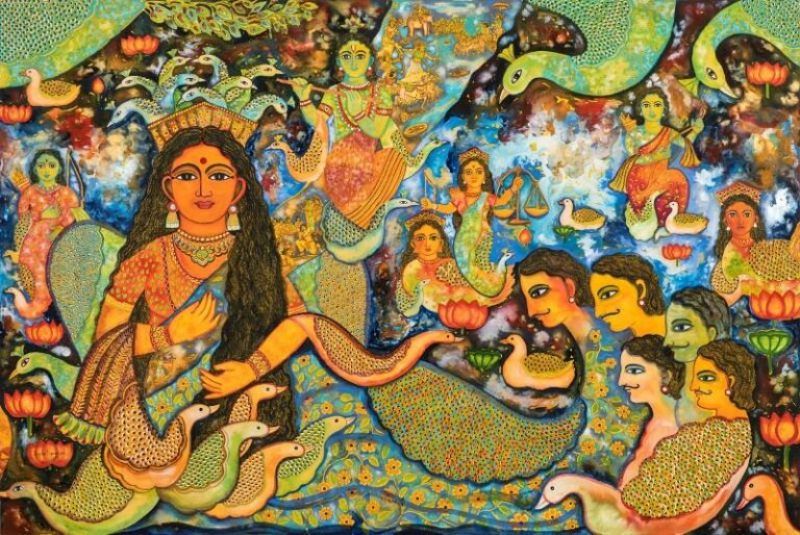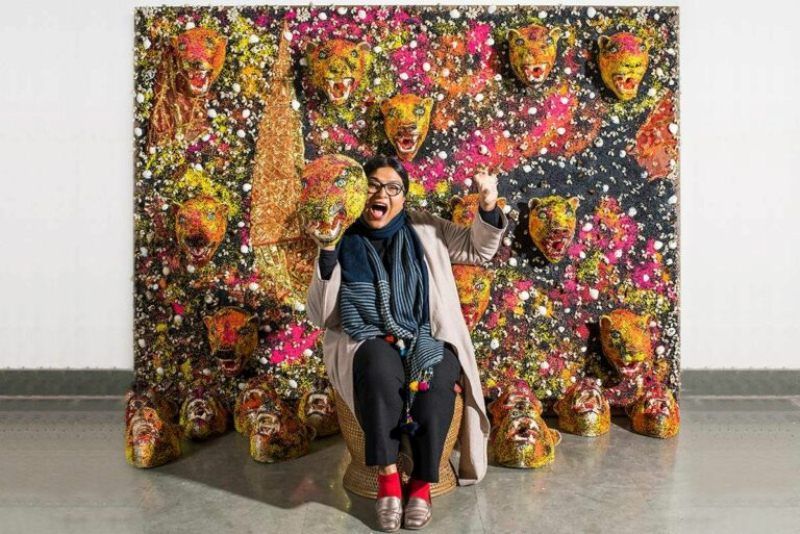Jayasri Burman Age, Husband, Family, Biography & More
Some Lesser Known Facts About Jayasri Burman
- Jayasri Burman is a contemporary Indian artist known for her watercolour paintings and bronze sculptures. She takes inspiration from Indian mythology and Bengali traditions for her artwork.
- Her artworks mainly incorporate the Indian deities, the idea of worshipping goddesses, and ‘mother.’ She portrays Indian women as divine beings in her artwork and tries to deliver the message of nurturing ‘mother’ and ‘Mother Earth’ through it.
- When she was a child, she was introduced to the works of Rabindranath Tagore by her father.
- After completing her master’s degree, Burman went to Paris to learn printmaking under the guidance of Monsieur Ceizerzi. She also participated in a graphic art workshop with Paul Lingren during her stay there.
- In an interview, she talked about her sufferings in her first marriage. She said that her first marriage dissolved after 17 years and also lost her baby.
- Burman’s artworks are primarily based on the amalgamation of myths and reality that she draws from the works of Rabindranath Tagore, drama, and the great Indian epics; of Ramayana and Mahabharata. In an interview, she talked about this and said,
I use mythological characters as the subjects of my paintings, but I take the liberty of bestowing them with a contemporary lifestyle.”
- She is known for maintaining refreshing candour and reflective honesty despite using Indian folk elements in her artworks. In many of her paintings, she has used the Indian folk art techniques of Kalighat and Patachitra paintings to make intricate patterns.
- The artist believes that colours and lines bear their autonomous symbolic meanings. She mainly prefers to use watercolours in her paintings and the most common colours used by her in her paintings are red, blue, and radiant saffron.
- She has a strong impact of the River Ganga on her, which reflects in most of her artworks. In an interview, she revealed that when she was a child, she used to visit River Ganga every year with her father to perform Luxmi Puja. She said that she love to observe the visuals of the river bank on her visit. While talking about this in the interview, she said,
I wanted to locate the source of all this power.” She added, “As a child, these things greatly impact you. Ganga became an indelible part of how I saw the world.”
- Burman paid a tribute to the River Ganga through her art series ‘River of Faith.’ It took her 12 years to complete the series. In 2021, her art series was presented by the Gallery Art Exposure in Bikaner House. In an interview, Burman talked about the devastation and destruction of the water of the rivers during the pandemic of COVID-19 and said,
These were people who died of Covid-19 but since there was no space for cremation, their bodies were thrown into the river. Personally speaking, it was very heartbreaking for me to see Maa Ganga being turned into an open burial ground.” [1]Open
- Some of the notable artworks from the series “River of Faith” include ‘Ambika,’ ‘Jahnvi I,’ ‘Jahnvi III,’ and ‘Adhisree.’
- Her art series “Born of Fire” is a tribute to Draupadi, who is a prominent character in the great Indian epic Mahabharata. Draupadi was born from a yajna (fire sacrifice) organized by her father, King Drupada of Panchala. In an interview, she talked about the bravery, sacrifice, and courage of Draupadi and said,
Draupadi is the truest champion of justice and fair play, she stands for women rights and humanity.” She added, “Draupadi is our symbol of hope and fortitude and (I believe) she must remain in the midst of our lives as an icon woman we can all draw inspiration from. She belongs to us!” [2]Jayasri Burman
- Her art series “Born of Fire” consists of two parts, one includes colourful paintings and other sketches. Some notable paintings from this series include ‘Draupadi and the five Pandavas,’ ‘Draupadi and the Game of Dice,’ ‘Born of Fire,’ and ‘Ratna Kuntala.’
- Burman made the installation ‘Primordial Power’ by using sculptures of tiger faces and votive churnis. In India, there is a practice of offering votive churnis and garlands by the devotees to their gods or goddess in temples and mosques to get their wishes fulfilled. The artist believes that each votive offering depicts the story of the devotee and the use of these votive churnis in her art piece expresses the faith of devotees in god. In this installation, the use of the face of tiger, which in Hinduism is considered a divine vehicle of the goddess Durga, symbolises the intangible power that destroys evil and builds vigour of hope.
The tiger finds its roots in my birthplace, Bengal, which prides in harbouring the Royal Bengal Tiger. It will bot be wrong to mention that they are reminiscent off the panel where they are “prancing, proud and unafraid” in Adrienne Rich’s Aunt Jennifer’s Tigers’, Basking in their feminine fires.”
- In 2005, Burman organised an exhibition titled “The Family” along with her her husband, Paresh Maity, her uncle Sakti Burman, and her cousin Maya Burman.
- In an interview, the artist revealed that in foreign countries, her artworks are mainly bought by elderly people as according to them, they feel attracted to and emotionally connected to the Indianness in her paintings.
- In an interview, she revealed that to get inspiration for her artwork, she has travelled to various places such as Uttar Pradesh, Bihar, Orissa, and Madhya Pradesh.
- In an interview, while praising the artworks of Jayasri Burman, the famous Indian poet and painter Pritish Nandy said,
The significant factor about Jayasri’s art is that it is not just about our past, our tradition, our mythologies, it is also about today. It is this enchanting integration of cultures, language, idiom and narratives that makes her such a remarkable chronicler of our times.”
- In his book “A Mythical Universe,” Prof. Partha Mitter described the themes used by Jayasri Burman in her artworks, and wrote,
Jayasri’s themes deal with the feminine, with the empowerment of women through the traditional language of the sacred in Hinduism, her inspiration is the variety of incarnations of Shakti or female energy, the great Goddess, who is considered the mother of the universe. With her muted but engaged feminism, Jayasri Burman refashions the universe of Hindu mythology, which acquires in her paintings an entirely contemporary meaning and nuance. This is the best sense tradition, reinterpreted, reinvented, revised and re-imagined for India of today.”
References/Sources:

